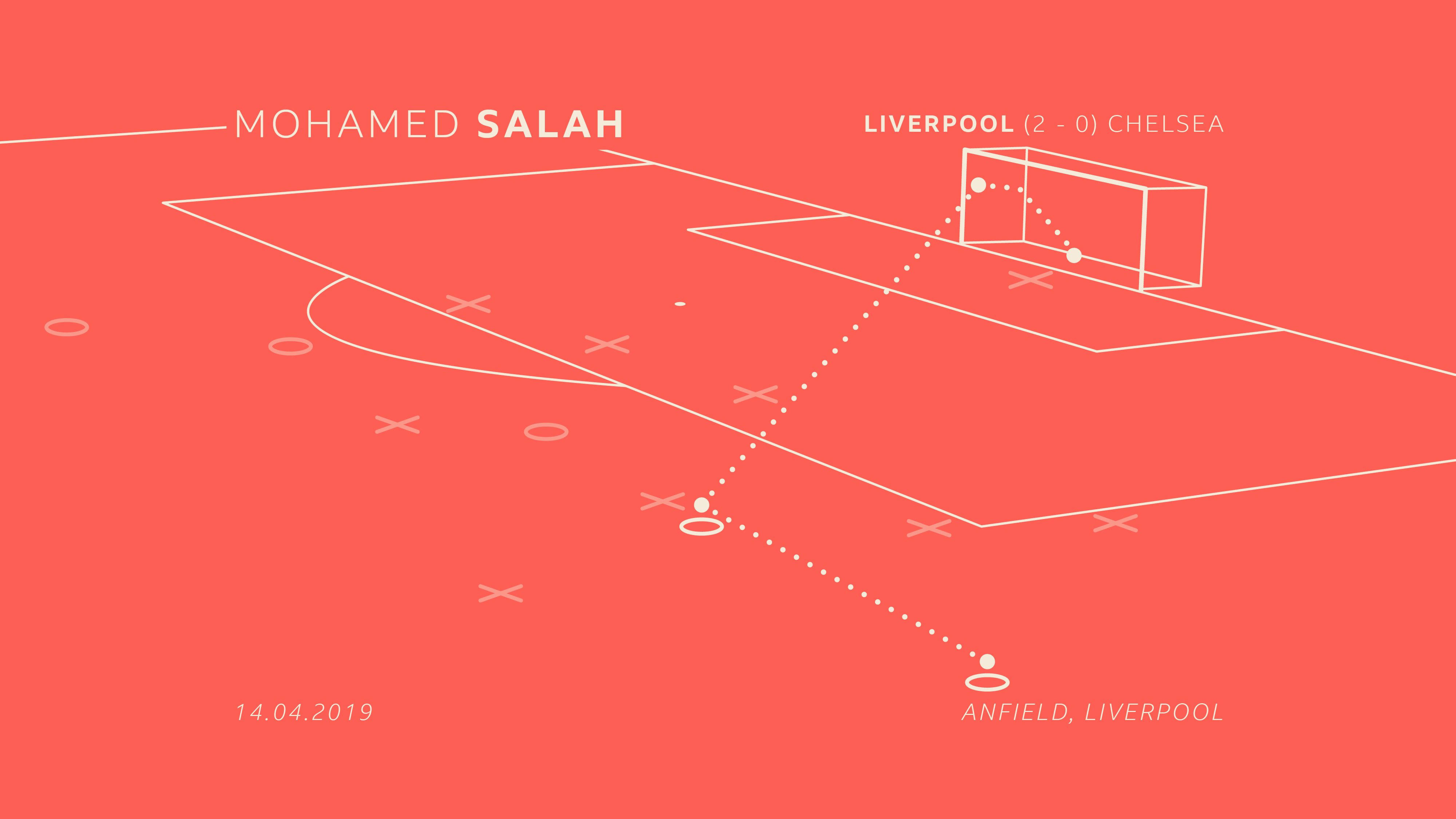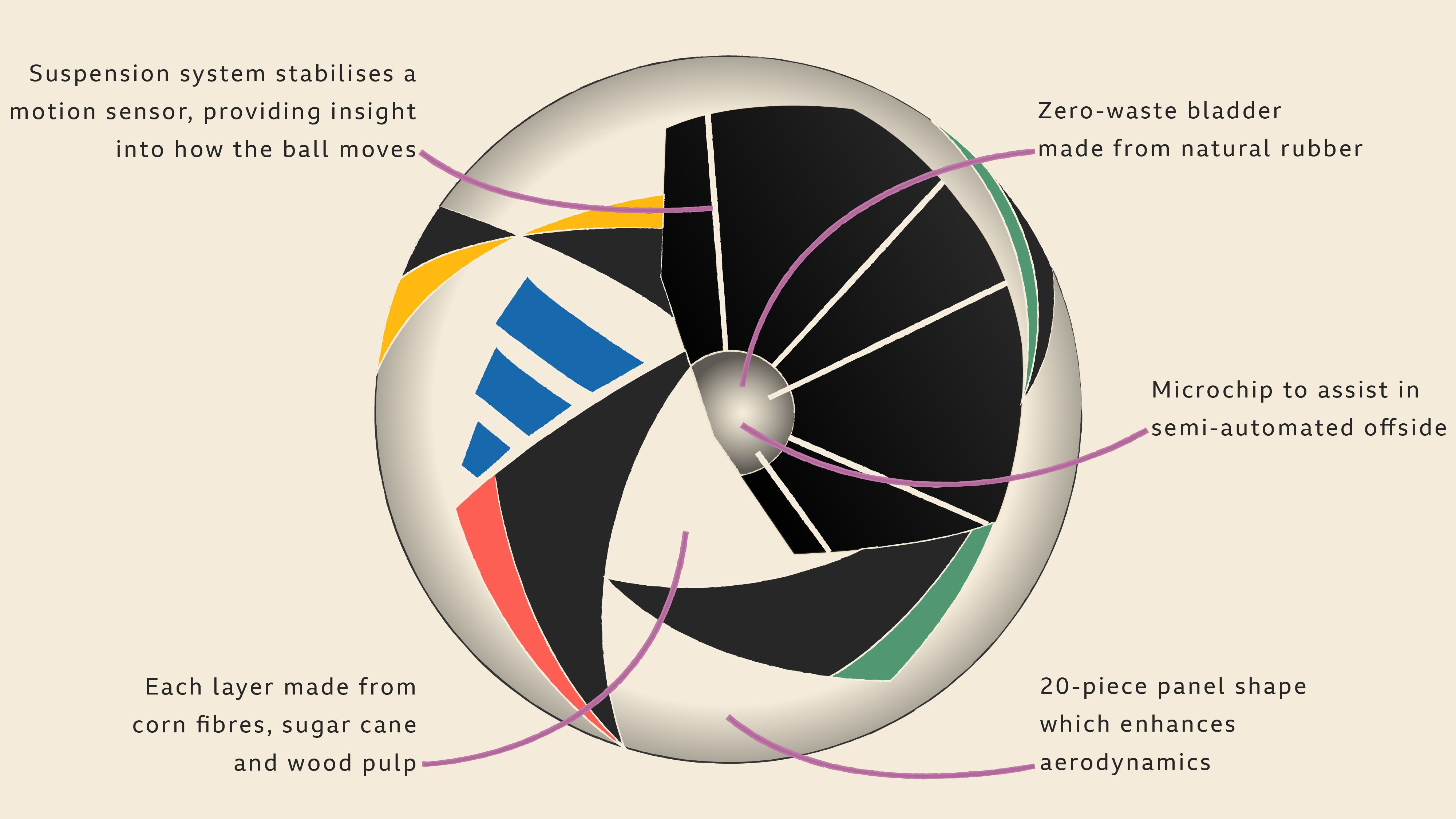

The slow death of the screamer
It was only by goal number 10 that the pace slackened.
Robin van Persie's strike against Watford – a cut inside, followed by an Henry-esque curled finish into the bottom corner – was neat, but it lacked the punch of the previous nine.
Because December 2006's goal of the month contest was powerful stuff, a 100%-proof cocktail of hollering commentators and screaming shots as semtex insteps hit the ball with gleeful abandon.
Paul Scholes casually punts a dropping ball in off the Aston Villa crossbar. Didier Drogba swats a swerving hack of a volley past Tim Howard. Michael Essien rifles one down the barrel, only the net saving the faces of the Stamford Bridge front row.
The goals came thick, fast and from outrageous distance. Even if you don't remember the selection, you have probably seen it. It regularly resurfaces, to acclaim, on social media.
Of all the shortlist, Matt Taylor's goal was longest. The Portsmouth midfielder was just beyond the centre circle when the ball drifted to him out of a tackle. His 55-yard volley sailed over Howard – who was having a bad December – and in.
"It just popped up lovely," he says, nearly 18 years on. "And I thought, 'go on, why not hit it?'"
But for modern players there seem to be plenty of reasons why not.
The screamer is a species in stark decline.




Fewer shots from further out
In the 2006-07 Premier League season - the one featuring that stellar goal of the month compilation - 22.3% of non-penalty goals came from outside the box.
The figure for 2023-24 was nearly half that at 12.4%.
Indeed, in the last campaign, outside-of-the-box goals made up the lowest share of total goals in any Premier League season.
The trend in teams' intentions is even clearer.
Since StatsPerform has collected data in 2003-04, the average number of shots from outside the box per Premier League game has fallen steadily and significantly from 13.3 to 9.1 last season, a 32% decline.
Across Europe the evidence is similar.
The continent's top five leagues – Premier League, Spain's La Liga, Germany's Bundesliga, France's Ligue 1 and Italy's Serie A – have all shown teams creeping closer and closer to goal.
The trend, shown in data collected by Driblab, is remarkably consistent.
The average shot distance has declined by roughly 2.5 yards over the past nine seasons in all five leagues, bar La Liga where the reduction is a more modest 1.2 yards.
But the story behind the stats? That's harder to discern.




Data, tactics and small-screen fame
"I did a quick calculation," says James Yorke, director of football at StatsBomb, one of the sport's leading data suppliers and analytics companies.
"After about 25 yards, the expected goal value of a shot is about 0.03, so roughly one in 33 goes in. From 20 yards, that doubles, but is still only 0.06.
"Even from 12 yards – you think, 'oh, penalty spot, that is a good chance' - but the likelihood of scoring is still one in six.
"You have to be in the six-yard box before you are even talking about 50:50 coin flips.
"It sounds crazy – your intuition is that goals are more likely than they actually are. For any shot, everyone overestimates the likelihood of it going in.
"But there is a fundamental truth that getting closer in changes something that is highly infrequent into something that is, relatively, much more frequent.
"It doesn't get exponentially more likely, but the curve is step."
What Yorke is describing – an expected goals model – is one of the most basic building blocks in football analytics.
But less than a decade ago, using cold numbers to assess shooting opportunities, rather than relying on gut feeling and optimism, was revolutionary.
"Around 2012 up to 2015, expected goals models became prevalent, understood and known more widely," says Yorke.
"You would be crazy as a coach not to incorporate what those models are telling you into what you are telling players."
So, did data change tactics? Did coaches see in the spreadsheet that long-range goals carve themselves into our memories, but, over the season, attempting to repeat them dents their chance of victory?
There is a precedent.
In basketball, where successful long-range shots are worth three points rather than two, analytics have conversely fuelled a switch to teams taking on more attempts from distance.
But even the biggest brains in football data aren't convinced their industry is the cause of the trend.
Speaking at the MIT Sloan Sports Analytics conference in March, Sarah Rudd – who pioneered the use of advanced statistics in football when she was brought in by Arsenal in 2012 – was asked how and why things had changed on the pitch.
"Data is forcing people to be a little more intentional in how they analyse things," she said.
"So people now ask 'if I shoot from outside the box what are the consequences?'"
But she also pointed out that long before mathematical models arrived the best teams tended to focus on taking higher-quality shots, closer in.
One of Rudd's first projects at the Emirates was to assess whether, as per a common criticism of late-era Arsene Wenger, his Arsenal team were attempting to "walk it in".
"What I found was that they were, but so were all the other good teams in the Premier League," she said.
The numbers only confirmed the wisdom in what the best were already doing.
Alongside Rudd on the panel was Ian Graham, who, until 2023, held a similar role behind the scenes at Liverpool.
Rather than data affecting tactics, he sees the opposite: a sea-change in tactical approaches affecting the data.
"I think a decrease in shooting distance is a consequence in a change in playing style," he said.
"Compared to 10 years ago when there was a lot of long-ball football and attempts from outside the area, teams are playing in a much more similar style to that brought in by Pep Guardiola and Jurgen Klopp.
"I think it is just a happy accident that it looks analytics related."
High-line defences being pressed hard and fast by the opposition mean, when chances do come in today's game, attackers have either a closer sight of goal or a clear run to it.
No longer are they feeding on knock-downs and snap-shots as deep-lying backlines keep them at arm's length.
But Taylor's thought process at Fratton Park in December 2006 wasn't so complex.
As a loose ball flew up out of a contest between Nwankwo Kanu and Simon Davies, he didn't think about high-value shots or low defensive blocks, opportunity cost or half spaces.
Instead, Taylor just noticed it sat up lovely.
Now a manager, he thinks today's generation of players have more on their minds.
"If you sat down players from December 2006 and now, they would be two different groups of people," he says.
"There has always been pressure internally – from your coach, team-mates and the fans in the stadium - but there is a lot more pressure externally now.
"After a match a player will shower, do their media bits, then turn their phone on and they might have 50,000 messages where they have been tagged on Twitter or Instagram.
"That is where young players – young people in general - get a lot of their information and feedback from. And all humans like praise and dislike stick.
"If you take a shot from 25 yards, it goes over and you get that criticism, the next time that chance arises you are probably going to be thinking in the back of your head, 'if I miss again, I might get the same response'.
"Does that affect people and shape their decision-making? Of course it does, it has to."
In November, Sky Sports' data editor Adam Smith noticed a statistical quirk that might reinforce Taylor's theory, that what players consume via their screens affects what they produce on the pitch.
The release of Netflix's docuseries charting David Beckham's career – the first episode of which zeroed in on his famous long-range goal against Wimbledon in 1996 - coincided with a four-fold increase in shots from 30 yards and beyond in the Premier League.
A few weeks later, attempts from distance seemed to fall back to their previous level.
Social media was barely born in December 2006. Podcast analysis and YouTube watch-alongs didn't exist. Television showed fewer games and highlights were harder to find.
Social contagion spread in a more personal way.
In today's Premier League, competing systems and processes grind a way to a result. The players are cogs in the machine.
The noughties though, was a time of alpha ball-strikers. Greatness came more often via a single act from a single actor. A bolt from the blue – or 25 yards plus – formed team's figureheads.
The top scorers of Premier League goals from outside the box maps the era's biggest names and rivalries: Frank Lampard of Chelsea, Steven Gerrard of Liverpool, David Beckham of Manchester United, and Thierry Henry of Arsenal.
When the ball dropped to any of them 25 yards out, was their instinct, untamed by multi-outlet criticism, to try and outshine the stars elsewhere?
While most prolific and readily associated with wonderstrikes, those names aren't the best long-range shooters. Or, at least, not the most efficient.
Since Stats Perform started collecting the data in 2003-04, the most successful player in converting outside-of-the-box shots into goals in the Premier League is Matheus Pereira, the Brazilian who spent two seasons with West Brom between 2019 and 2021 before heading to Saudi Arabia.
Interestingly, Manchester City - known for their highly structured, intricate attack aimed at getting round the back of defences - are well represented among the most efficient long-range artists, with Bernardo Silva, Phil Foden and Sergio Aguero all in the top five.
The whole list skews more recent, suggesting current players are more picky about their chances from distance, shooting less frequently, but more successfully.
There is a silent partner in every screamer of course.
A glut of long-range goals in this summer's European Championship turned attention on the ball, with suggestions that something about Adidas' creation – which contained sugar cane and wood pulp – favoured strikers more than goalkeepers.
At the 2010 World Cup an above-average number of long-range goals coincided with goalkeepers claiming Adidas' Jabulani ball had an unpredictable trajectory.
The 2006-07 and 2007-08 seasons – the two campaigns in Premier League history with the highest share of long-range goals – were both played with the Nike Total 90 Aerow II.
It was the first time that Nike had stopped mentioning the ball being "faster" in their promotional material, believing the quality had to be "inherent". Perhaps they should have done.









The lure of the spectacular
"The game's changed, whether it is the scrutiny and negativity or whatever, players are taking less risks than in my day," says Taylor.
"People say the speed of the game has increased and a little bit of the flair has been taken out.
"From a football fan's point of view – which is what I am – I would love to see players take more risk and score more long-range goals."
That thirst for the thunderous is universal.
Back in the 1990s, videos bringing together the best from around the world – sample title: Lightning Strikes - would be passed around schoolyards until the tape wore thin.
Now, ballistic YouTube compilations rack up millions of views
From Ronnie Radford to Rooney, there are few sights more compelling.
Over the last 18 years, the average range of the Premier League's goal of the season has been 22.5 yards.
But for every long-range effort that hits the net, multiple others hit the back of the stand.
And while the number of screamers has gone down, the total number of goals has steadily climbed.
The 2023-24 season had the second-highest number of non-penalty goals of any Premier League campaign. The only season to beat it was the very first: 1992-93.
There were 11 more goals in 1992-93. But, with 22 teams in the Premier League at that time, there were also 82 more matches.
Premier League teams have become better at scoring goals, but they have been of a 'worse' quality, at least judged by the primitive thrill of a ball well-whacked.
Whether that trade-off leaves fans in credit or debt is, like picking a goal of the month, a matter of personal taste.


Credits
Written by Mike Henson
Subbed by Richard Dore
Design by Andy Dicks
Images by Getty
More Long reads
Mcllroy at the Masters?
BBC Sport looks at the data to assess whether he will finally achieve his goal.
Game changer: Steph Curry
BBC Sport looks at his three-point shooting and how it's changed the culture of Basketball




